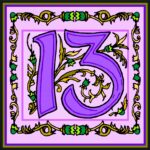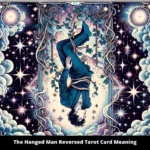Throughout history, the Tarot has captivated countless souls, transcending mere divination to delve into the intricacies of the human experience. Central to the Tarot deck is the Major Arcana, a collection of 22 cards laden with profound symbolism and archetypal narratives. Each card serves as a portal, revealing underlying truths and spiritual lessons that resonate deeply within our subconscious. This article will explore the meanings attached to each card in the Major Arcana, examining the layers of significance that contribute to its enduring allure.
The first card, **The Fool**, embodies the spirit of new beginnings and infinite potential. Depicted as a carefree traveler on the precipice of adventure, The Fool represents the essence of spontaneity and optimism. This card signifies the importance of embracing the unknown without the shackles of fear, fostering a mindset open to exploration and growth.
Next, we encounter **The Magician**, who symbolizes manifestation and resourcefulness. This card illustrates the alchemist archetype, wielding the power of creation through will and intention. The Magician encourages individuals to harness their intrinsic talents and to utilize the tools available to them. This sense of empowerment fosters a connection between thought and action, suggesting that reality can be shaped through clarity of purpose.
**The High Priestess** epitomizes intuition, mystery, and the subconscious mind. Clad in flowing robes, she sits serenely between the pillars of light and dark, symbolizing balance and the duality of existence. The High Priestess invites us to delve into our inner worlds, urging exploration of dreams and hidden insights. She represents the importance of introspection, highlighting that wisdom often emerges from silence and contemplation.
**The Empress** radiates nurturing energy, embodying fertility, creativity, and abundance. As a maternal figure, she encourages the cultivation of relationships and the nurturing of one’s creativity. This card emphasizes the interconnectedness of nature and humanity, suggesting that genuine fulfillment springs from harmonizing with the environment and those we hold dear.
A stark contrast arises with **The Emperor**, symbolizing authority, structure, and control. He represents the paternal archetype, advocating for stability and order in life’s chaos. The Emperor’s disciplined approach serves as a reminder that while freedom is vital, embracing responsibility can lead to achievement and security. Through authority, one can create a solid foundation upon which dreams can be built.
Emerging from the blend of compassion and confrontation is **The Hierophant**, the mediator between the sacred and the mundane. This card embodies traditional values, spiritual guidance, and educational influences. The Hierophant encourages the seeker to seek wisdom from established institutions and mentors, fusing personal insight with collective knowledge. This synthesis can illuminate one’s path and forge a deeper understanding of society’s norms.
The duality of polarities culminates in **The Lovers** card, which signifies relationships and choices. This card transcends mere romantic entanglements; it explores the essence of duality and interconnectedness in all partnerships. The Lovers advocate for honesty, loyalty, and commitment while emphasizing the importance of making conscious decisions that align with one’s authentic self.
**The Chariot** depicts triumph through determination and willpower. This card illustrates the journey of self-control through life’s trials, reinforcing the idea that success is often determined by persistence and focus. It serves as a reminder that one’s triumphs are often the result of harnessing various forces—be they internal or external—and steering them toward a singular goal.
**Strength** is a poignant reminder of the power found in gentleness, patience, and compassion. Often portraying a woman taming a lion, this card emphasizes the importance of inner strength over brute force. It symbolizes the strength necessary to face personal fears and adversities, underscoring the notion that vulnerability can indeed signify resilience.
Transitioning into personal reflection, **The Hermit** embodies solitude and introspection. Adorned with a lantern, he guides us through life’s uncertainties, inviting a period of self-examination. This card urges seekers to connect with their inner selves, suggesting that wisdom emerges from periods of retreat and reflection. It is in this solitude that clarity can be found.
Following introspection is **Wheel of Fortune**, which symbolizes the cyclical nature of life. This card reflects the inherent ebbs and flows we encounter; fortune can shift unexpectedly, bringing both fortune and misfortune. The Wheel encourages embracing the uncertainties of life, recognizing that change is a constant and that growth often emerges from life’s unpredictable twists.
**Justice** represents fairness, balance, and the pursuit of truth. This card emphasizes accountability and moral integrity, urging individuals to take responsibility for their actions. Justice advocates for impartiality, encouraging one to weigh decisions carefully while understanding the larger consequences of actions taken.
As we explore the darker aspects of existence, **The Hanged Man** symbolizes surrender and perspective shifts. This card illustrates the notion of letting go, encouraging individuals to pause and reassess their journey. By relinquishing control, one can gain newfound insight and clarity, highlighting the beauty that can be found in patience.
Emerging from the shadows is **Death**, a card often misunderstood, symbolizing transformation rather than literal demise. Death marks the end of one phase and the commencement of another, heralding the release of what no longer serves a purpose. This card encourages the shedding of old beliefs and patterns, fostering the growth of new possibilities.
**Temperance** embodies harmony and balance, advocating for moderation in all aspects of life. This card encourages individuals to integrate diverse elements, creating a sense of equilibrium. Temperance teaches the importance of patience, suggesting that balance can be achieved through thoughtful consideration and purposeful action.
In the closing chapters of the Major Arcana, we find **The Devil**, representing temptation, materialism, and addiction. This card serves as a warning to confront the shadows within and to avoid becoming ensnared by unhealthy attachments. It highlights the power dynamics that can arise from succumbing to base desires, urging vigilance in the pursuit of authenticity.
The penultimate card, **The Tower**, symbolizes upheaval and revelation. Often perceived as foreboding, the Tower emphasizes that profound transformation can occur through the dismantling of established structures. This card serves as a reminder that personal growth often emerges from moments of crisis, allowing new perspectives to flourish from the ruins of the old.
Finally, we arrive at **The Star**, which embodies hope, inspiration, and renewal. This card radiates positivity, encouraging a sense of optimism and direction. The Star instills belief in the healing power of dreams and aspirations, inviting individuals to trust in their pursuit of joy and fulfillment.
In the conclusion of the Major Arcana journey, **The World** encapsulates a sense of completion and achievement. This card signifies the culmination of experiences and lessons learned, presenting a holistic view of the self. The World encourages integration and the celebration of life’s journey, inspiring individuals to recognize their place within the greater tapestry of existence.
The Major Arcana, with its rich tapestry of meanings and symbolism, serves as a mirror to the human condition. Each card presents an opportunity for reflection, inviting exploration into the depths of our psyche. The fascination surrounding Tarot lies not only in its potential for divination but in its capacity to foster a deeper understanding of ourselves and our world.








Leave a Comment